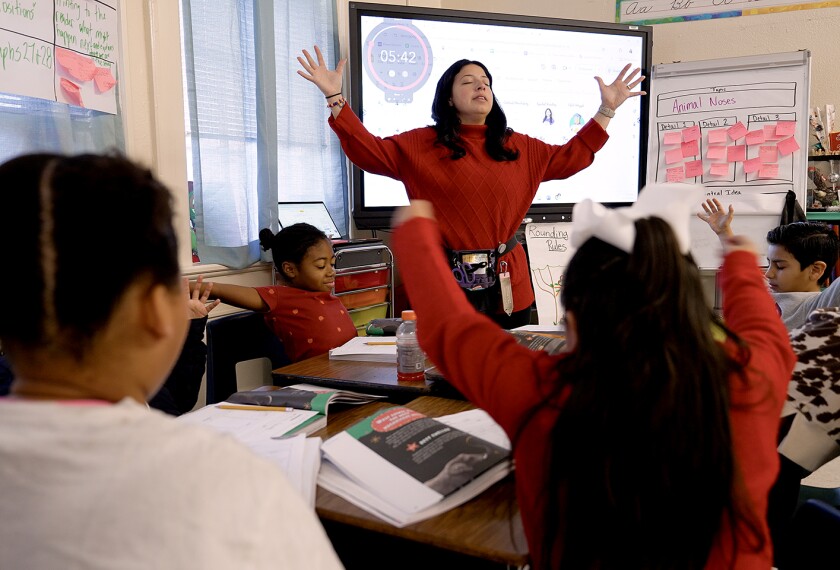Schools have been putting a much greater emphasis on mental health and social-emotional learning as a core part of their strategy to help students recover from lost learning time and other hardships brought on by the pandemic.
But in recent months, there has been some pushback against social-emotional learning, as some critics have lumped it together with politicized debates on teaching about racism and gender and sexuality.
Research has shown that students need to feel secure and emotionally stable in order to learn and perform at their best. The types of skills that students learn in SEL lessons include managing emotions and making good decisions—skills that contribute to a healthier learning environment. As students recover from the widespread disruptions—and in some cases, trauma—brought on by the pandemic, how should school and district leaders best promote and explain the kind of learning that will serve their students well beyond their K-12 years?
During a Sept. 21 Seat at the Table online discussion, Education Week opinion contributor Peter DeWitt, Education Week staff writer Evie Blad, elementary school counselor Tommie Glover, and social-emotional learning specialist Sydney Mitchell shared their ideas.
Clarify misconceptions
The first step is to clarify any misconceptions about social-emotional learning and mental health, the panelists said.
SEL and mental health initiatives sometimes overlap, but it’s important to note their distinctions. Social-emotional learning is a concept that describes helping nurture certain skills in children, such as self-awareness, problem-solving skills, and effective communication. It also describes schoolwide initiatives to create a healthy and supportive environment for kids.
Social-emotional skills have also been called “soft” skills or “future-ready” skills because employers have highlighted those as qualities they see in their most successful employees.
And while the term mental health is sometimes colloquially used to refer to someone’s emotional well-being, school-based mental health programs describe direct treatments for students with diagnosable conditions, such as depression and anxiety.
“People can often get on the same page if they understand what the words actually mean,” Blad said.
Bring parents into SEL work
Schools should include parents and the rest of the school community when social-emotional learning initiatives are rolled out, the panelists said.
Schools could include parents by hosting workshops that teach parents what SEL is and what it means for their relationship with their child, Mitchell said.
“One of the most intimidating things, I think, as a parent, is [when] this is not something that I know. This is not something that I’ve learned,” said Mitchell, a social-emotional learning specialist for Carole Robertson Center for Learning in Chicago. “So for you to be teaching my child this seems very intimidating, because now my child’s coming home and asking me questions, and maybe, even correcting me in the way that I’m speaking to them.”
Blad also said that schools should explain programs “without using jargon.”
“Schools are recognizing that when parents are concerned about these programs, [school leaders] need to identify as specifically as possible what [parents are] concerned about so they can discuss that with them,” Blad said.
Provide support for teachers
It’s also important for school and district leaders to provide support for the teachers who have to put SEL into practice in the classroom.
Support could be in the form of training sessions, Glover said. For example, his school district, Richland School District Two in South Carolina, is training educators about “co-regulation,” which is the process of helping a student regain their composure after misbehaving.
But it’s also important to remind teachers that they don’t have to be trained in psychology in order to help their students, Mitchell said.
“You just have to be willing to work things through with your students,” she said.
“If you’re having a bad day, you can tell kids, ‘I’m having a really hard day today. I’m feeling really anxious, I’m feeling this way, but here’s what I’m doing to work on it,’” Mitchell said. “You don’t have to self-disclose personal things, but you could say, ‘I’m having a hard time right now. I’m feeling a little bit anxious. So I’m going to try deep breathing. Do you guys want to try this with me?’”
Providing more student-support staff would also be helpful, not just for students but also for teachers, the panelists said. Schools around the country have faced shortages of student-support personnel for years, and even though there’s funding available, positions are often still hard to fill.
Some communities are starting a “grow your own” pipeline to train counselors, psychologists, and other support staff, Blad said.
Without the proper staffing, teachers are most likely feeling “overwhelmed,” Mitchell said. “What happens is teachers feel like they have to now deal with students with mental health concerns and students with social-emotional learning gaps,” along with teaching the core academic material.







